Battambang and Cambodia's Art Scene
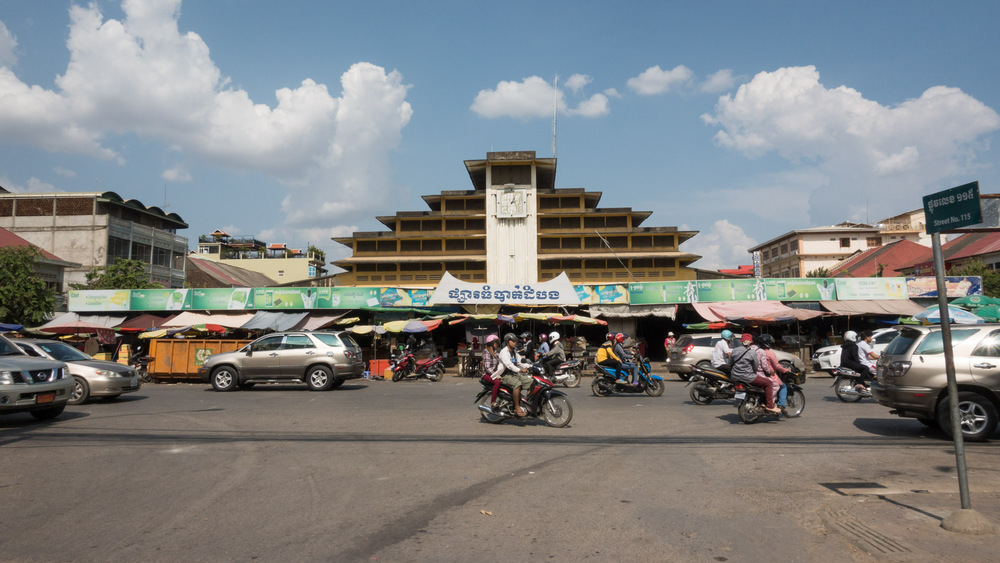
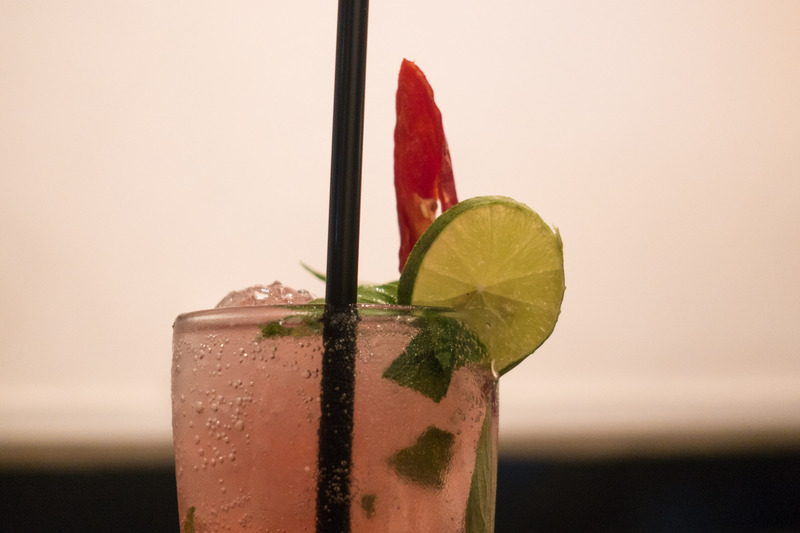
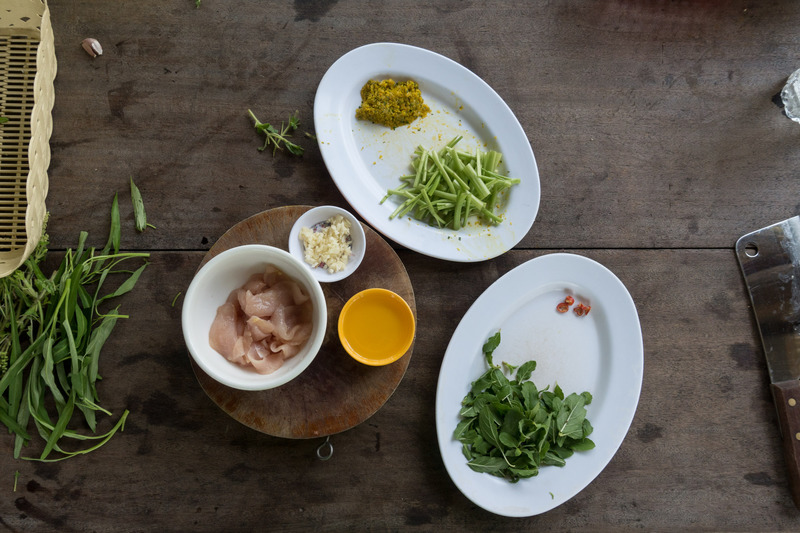
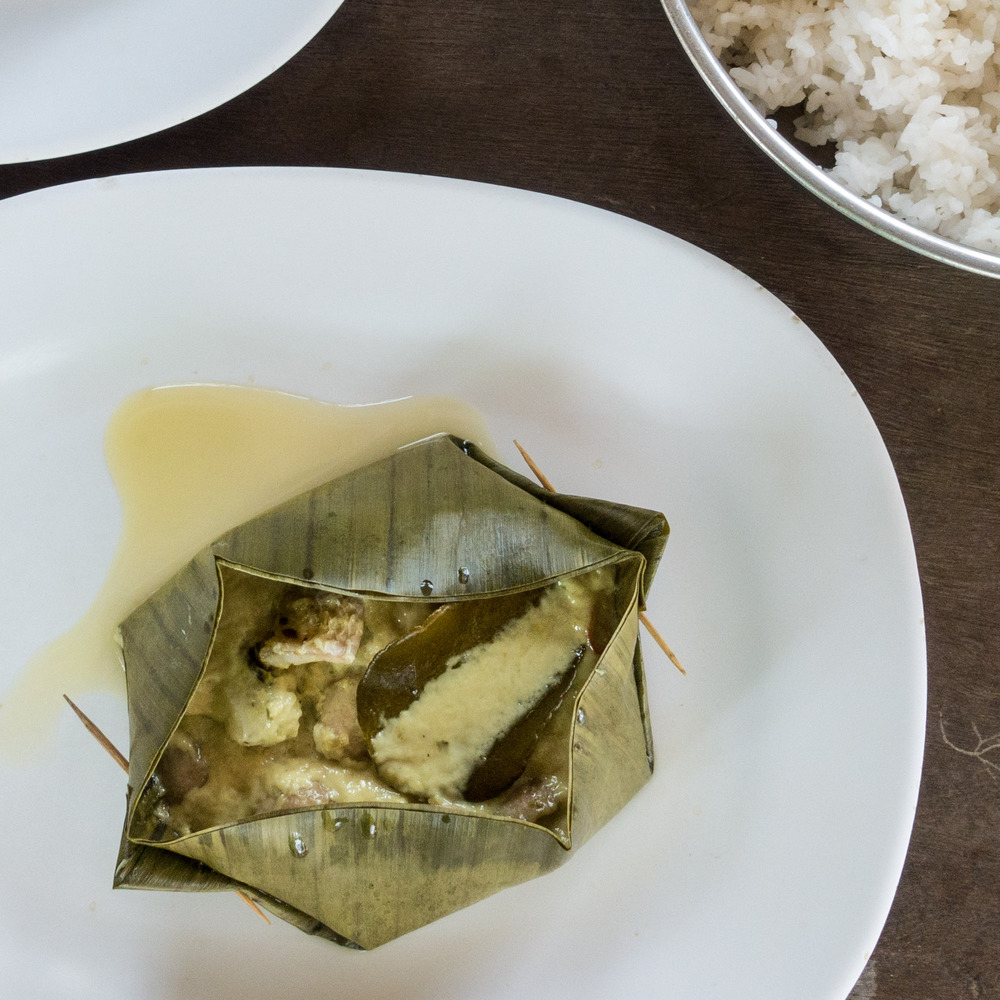
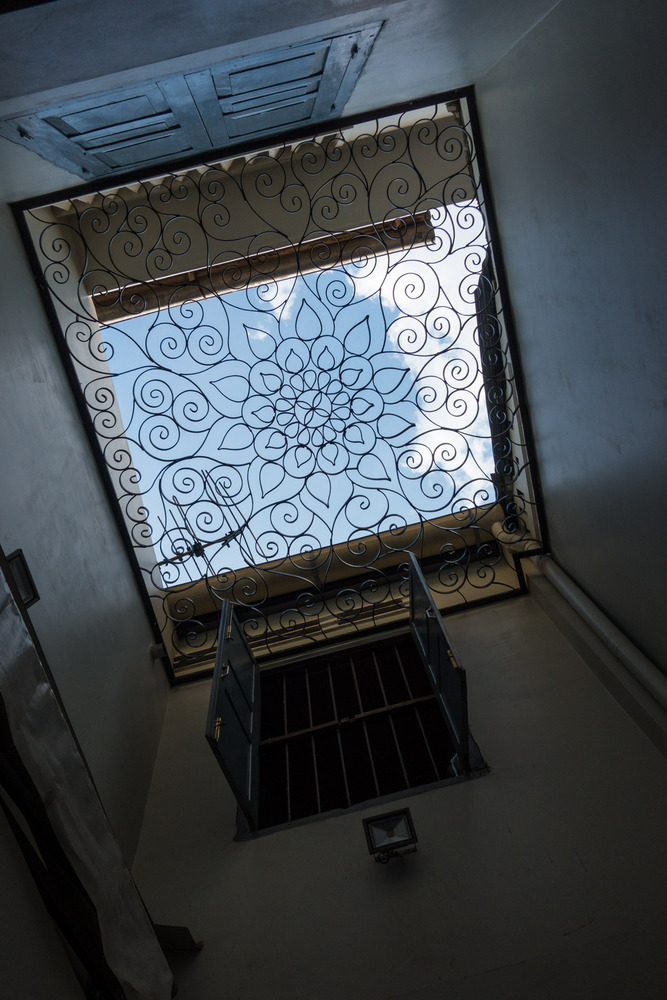
Compared to Phnom Penh and Siem Reap, Battambang is a sleepy provincial town. We did some of the usual touristy things in Battambang, but we also met some members of the local art community. We ate delicious food, both in restaurants and at the end of a cooking class. One restaurant of note was Jaan Bai, a hospitality training restaurant that serves amazing food and innovative drinks (the drink pictured above is called “the crocodile tail”).
When the French occupied Cambodia, they built train tracks around the country and imported trains to run on those tracks. After many years and the Khmer Rouge regime, those trains are long gone. The tracks are still there though, and enterprising locals figured out ways to transport goods on them. Lightweight bamboo platforms sit on two sets of wheels, and a rubber timing belt connects the drive shaft of the gas motor to one of the axels. The resulting mode of transportation is referred to as the bamboo train.
There is only one set of tracks and the “trains” don’t follow a fixed schedule. Therefore, when trains meet traveling in different directions, one train gets dismantled and moved off the tracks, and then reassembled once all traffic has passed. The decision of who gets priority is based on number of passengers, amount of transported goods, and whether there are multiple trains traveling in the same direction. With the growth of the Cambodian road network, however, most locals now transport goods via motorbike trailers or trucks, rather than the bamboo train.
One stretch of track near Battambang is maintained as a tourist attraction. The train rockets along at a whopping 20 kph. It’s quite loud; the rails are a bit warped, and the ends don’t always line up nicely. However, the whole experience was great fun and we were grinning the whole time.
As we were leaving the bamboo train station, we asked our tuk-tuk driver if he could take us to the old abandoned Pepsi Factory. He was confused, and we lacked the Khmer language skills to elaborate. He called over a police officer, who explained that the old site is no longer abandoned. Japan helped build a water treatment plant there, and the area is now off limits to tourists.
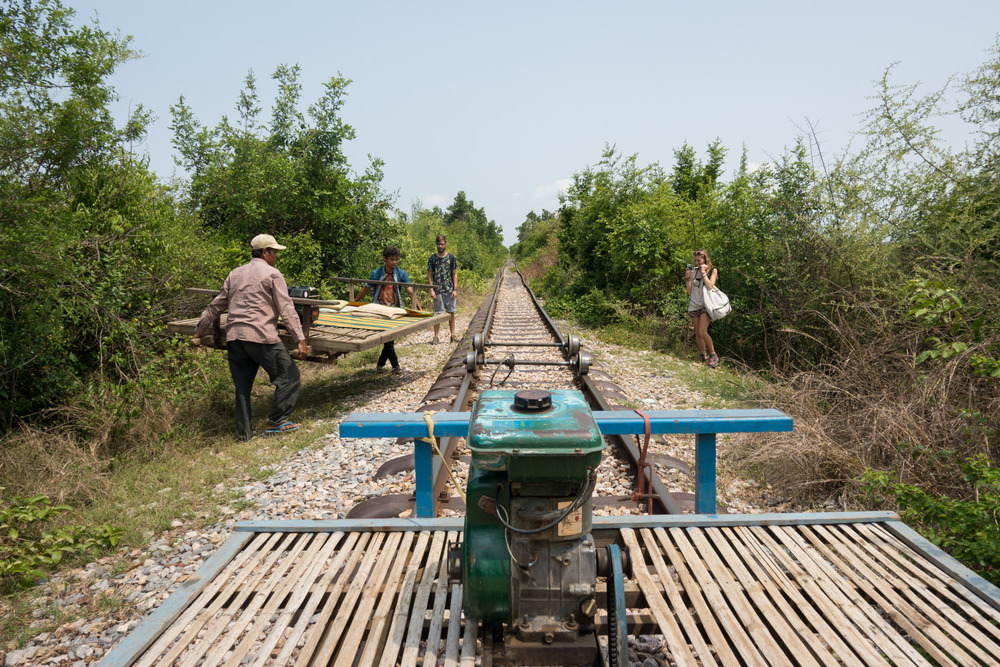
For $10, we hired a tuk-tuk driver to take us to and from Phnom Sampov, a large rocky outcropping located an hour’s drive from Battambang. Phnom Sampov is known as the home for a large bat colony, and tourists come to see them fly out of the cave at dusk. We arrived right before sunset and watched millions of bats streaming out of the cave. We were there for about 30 minutes, and I only noticed a tiny drop in the number of bats flying out. By the time we left, we noticed a couple of bats returning to the cave opening. I mused that because there is no dual carriageway at the cave entrance, a lot of skillful maneuvering is required to make it safely back inside.
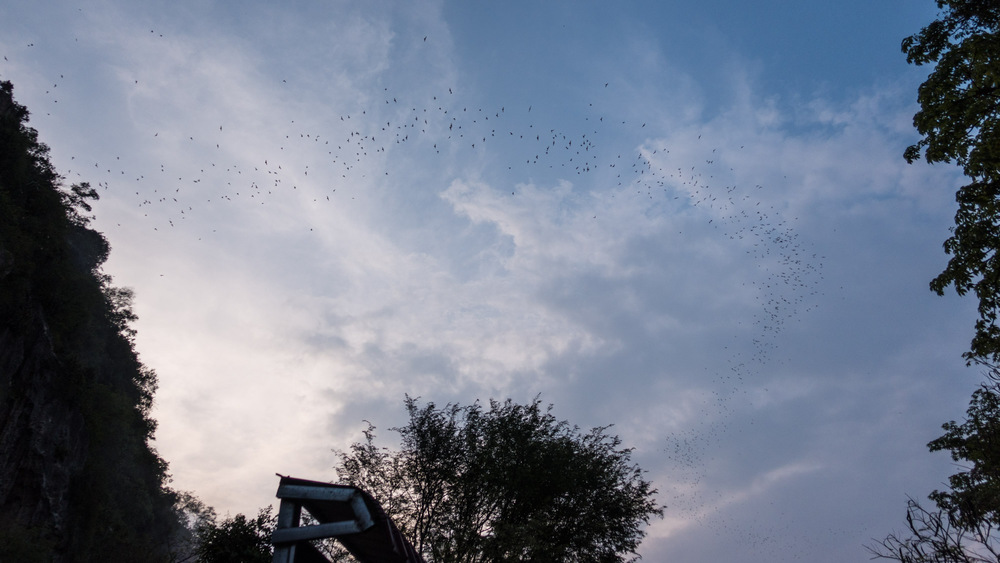
Jake and I arranged a cooking class with The Smokin’ Pot. The owner of this Battambang restaurant, Vannak, runs a cooking class out of his home. The cooking class included a visit to the local market and guided instructions for making three different dishes. We also talked about life in Battambang, and the long-term future he sees for both the cooking class and his restaurant.
After he picked us up from the restaurant, Vannak took us to a nearby market for supplies. Instead of Psar Nat, commonly referred to by tourists as the Central Market, he took us to a smaller market south of town. A majority of the sellers here are also the farmers who grew the produce; in contrast, most sellers at Psar Nat buy goods wholesale from local farmers and then resell them.
Vannak taught us how to prepare three different Cambodian dishes, and then gave us a cookbook for several more. I’m writing all names using romanized Khmer, since I don’t have a foolproof way of knowing if I’m using the correct Khmer spelling.
- Amok trey (fish amok): I viewed this as the canonical Cambodian dish, since we found it in almost every restaurant we visited. It is a fish and coconut curry that is steamed in a banana leaf.
- Cha kroeung sach moan (spicy chicken with lemongrass): This dish was served over rice, and was cooked using the same curry paste we made for the amok trey.
- Sgnor chrouk trey (fish soup): This soup was seasoned with both kefir leaves and lime juice. The kefir is added after fish sauce, and helps to absorb some of that bold flavor. Lime juice is added immediately prior to serving; if it is added too early, the acid will change some of the other flavors in undesirable ways.
After we were done eating the fruits of our labor, Vannak brought over two papayas that he’d just picked from the tree. I’d never been a big fan of papaya, but that day I learned that I’d just never had good papaya before. This papaya was sweet and soft enough to cut with a spoon, and lacked the offensive, perfume-y taste that I previously associated with the fruit.
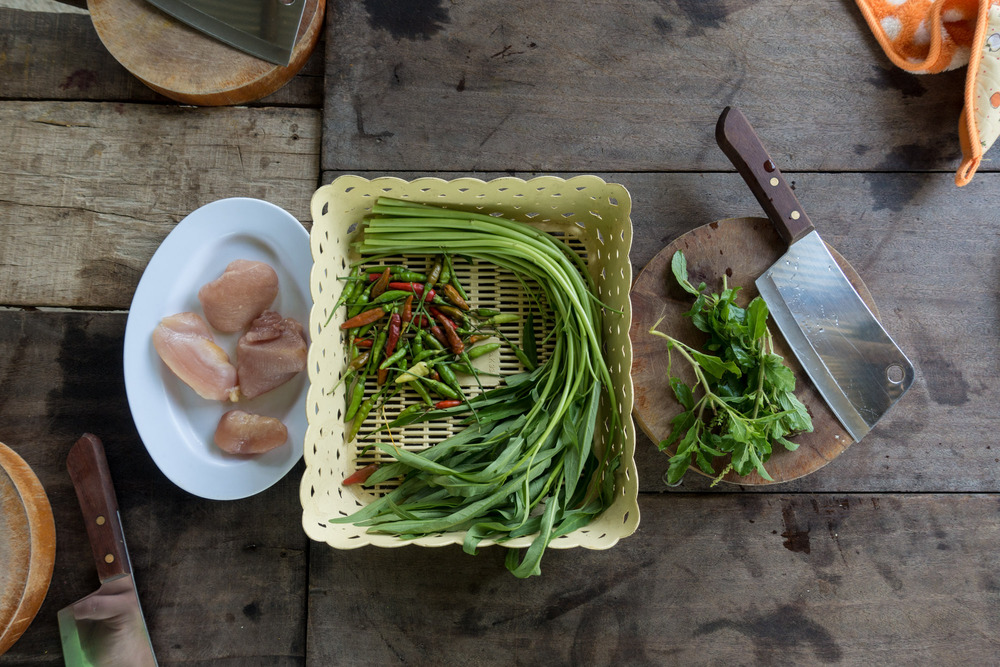
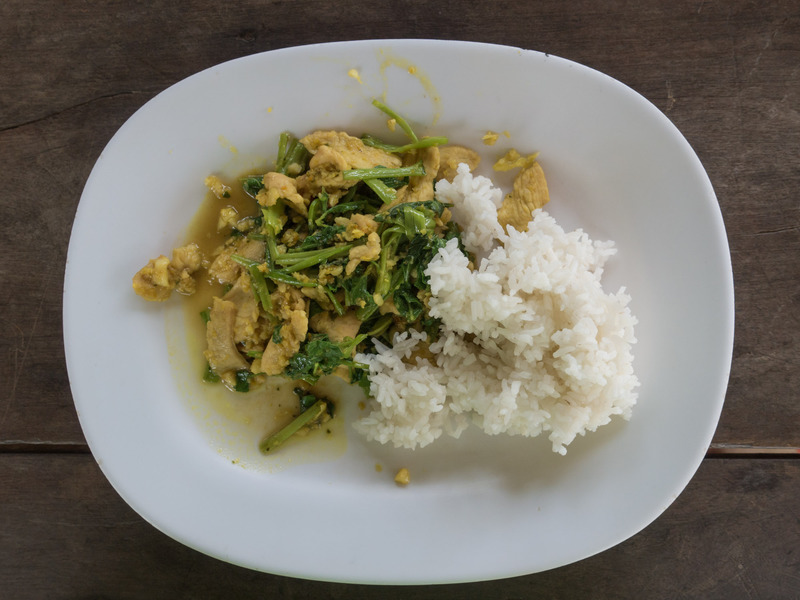
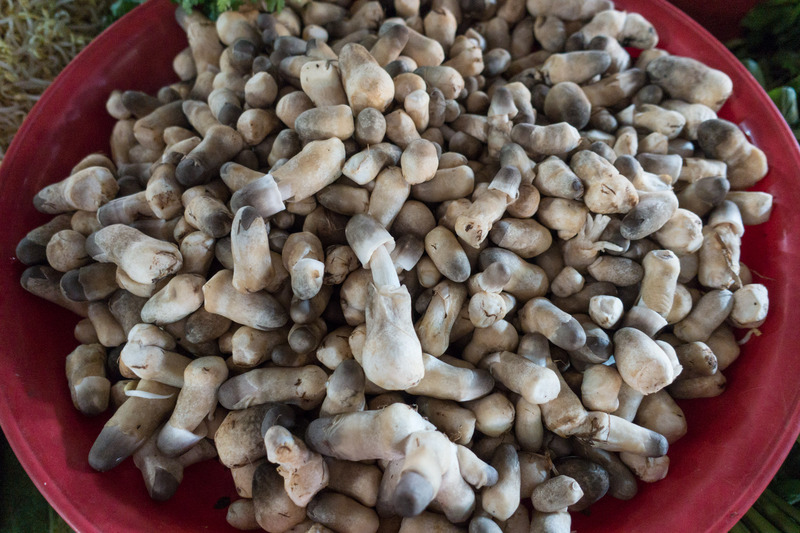
A local school, Phare Ponleu Selpak, teaches a variety of arts ranging from painting to circus arts to graphic design. The Phare Ponleu Selpak Circus School is the one most likely to be on tourist radars, as they put on several performances each week. Jake and I attended a performance on our last night in Battambang, and we were blown away by the skilled acrobatics and music. I found myself drawing comparisons to the world-renowned Cirque du Soleil, which speaks to the high quality of performance. Fittingly, some Phare Ponleu Selpak graduates go on to perform with Cirque du Soleil.
We wandered into a cafe and art gallery called Jewel in the Lotus. And we had such a good experience talking with the owners that we went back again two days later. The cafe is run by Darren and Touch. Darren’s work as a filmmaker brought him to Cambodia 10 years ago, and he never left. Touch (Khchao Touch) is a well-known local artist, and a former student at Phare Ponleu Selpak. Both of them taught at the school for a number of years. They are incredibly friendly people, and were happy to chat with us about life in Cambodia, their artistic backgrounds, and the history of Jewel in the Lotus.
Touch told us quite a bit about what inspires her and what drives her artwork. I admired her ability to skip small talk and dive straight into meaningful topics, such as what creates personal happiness and the importance of self-awareness and personal reflection.
Darren gave us a tour of the cafe, and told us about the remodeling project they completed a couple years ago. He pointed out the fantastic welded grate imbedded in the open-air skylight at the back of the cafe; light streaming in through the skylight produces a beautiful shadow on the walls, and a separate covering can be closed to prevent rain from getting inside. Later, we sipped some of his delicious lattes as we chatted with him and his daughter about weekend science experiments. One of our regrets: we never got around to trying the homemade granola.